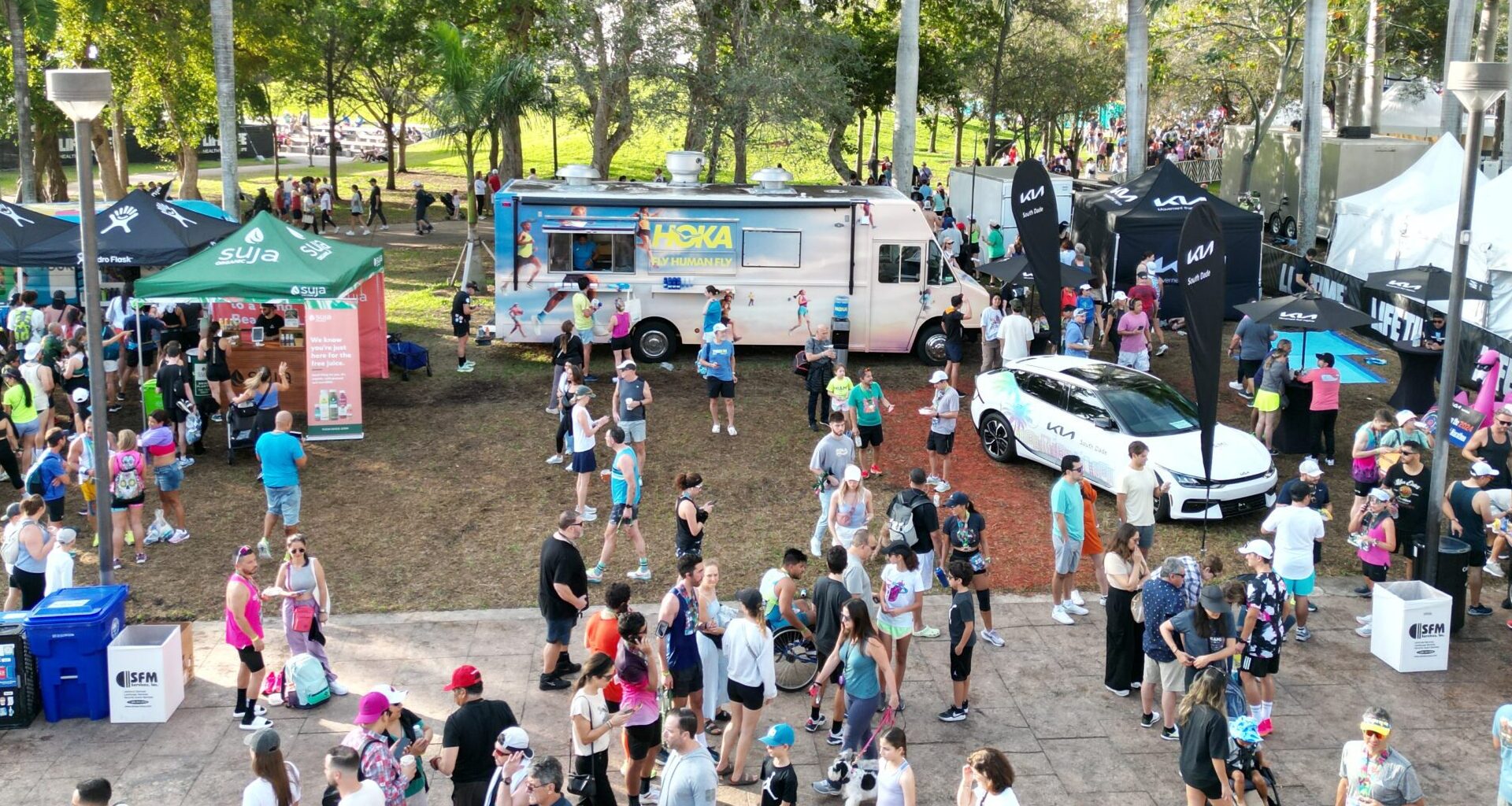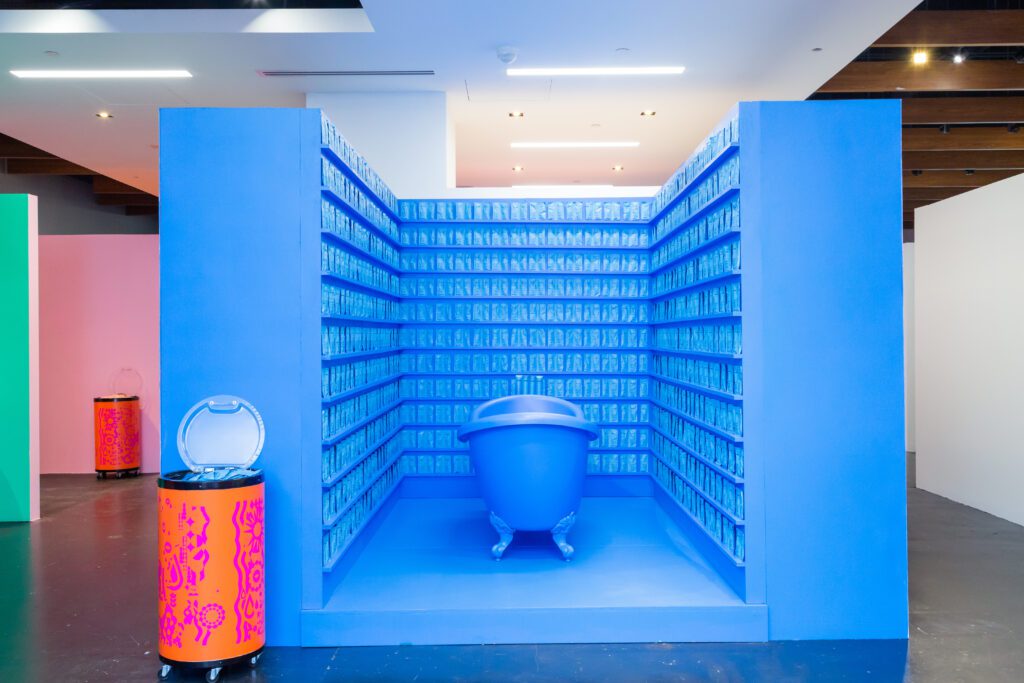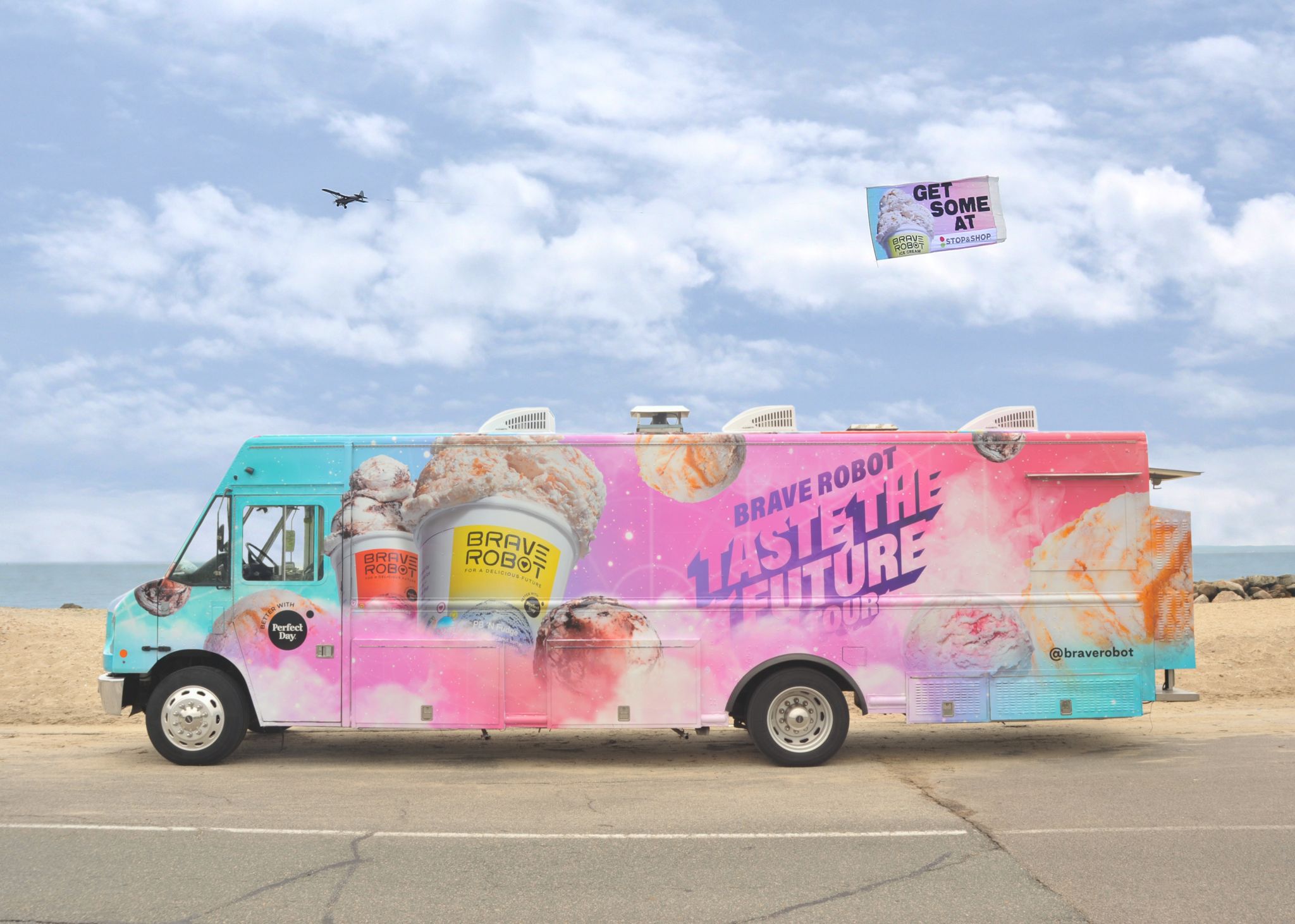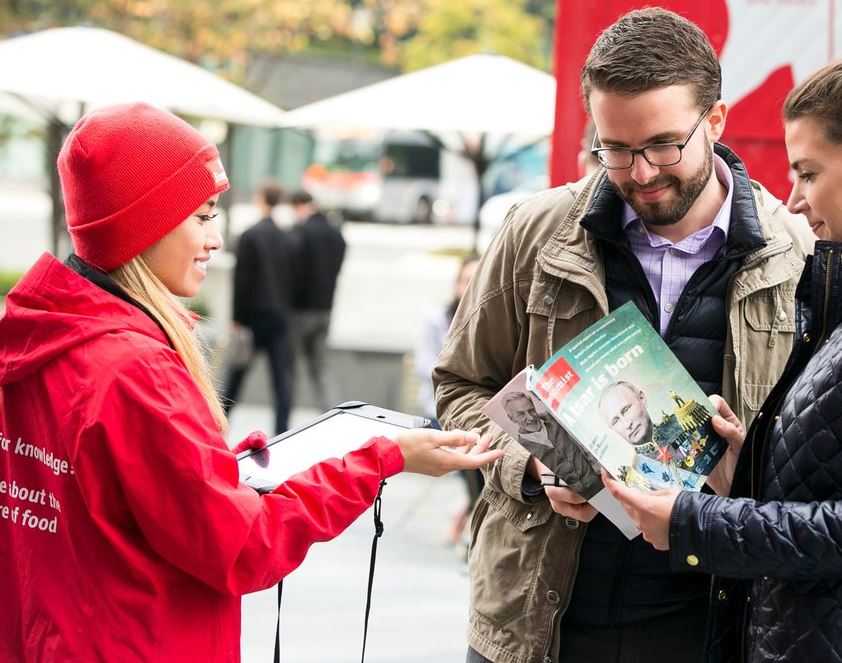
- Experiential Marketing
- Immersive Experiences
Immersive vs. Experiential: Blending Realities in Marketing
“Experiential” and “immersive” are popular buzzwords in the marketing world, and frequently used interchangeably. But although both terms describe ways of creating memorable firsthand experiences for consumers, they’re not quite the same thing — and understanding the difference can help you craft more cohesive and compelling experiences for your brand.
What Is Experiential Marketing?
Experiential marketing is a way for brands to connect with customers through hands-on, interactive activities. This interactivity is what differentiates experiential from conventional advertising: Rather than merely displaying the brand’s products or services, experiential marketing creates engaging experiences, motivating people to become part of the brand’s story through brand-themed experiences.
Examples of experiential marketing are everywhere — music festivals, trade shows, state fairs, beaches, shopping malls, downtown business districts. The goal of any experiential event is to draw visitors to experience the brand through activities, explains an article by UK-based agency Draw & Code. Taking a photo against a backdrop, attending a how-to workshop, sampling the product, sharing photos of a giant prop (like a massive Hellmann’s Mayonnaise jar), and other brief interactions create fun memories and intriguing social media content. Those activities also turn audience members into participants in your brand’s story, and they’ll likely remember that sense of belonging the next time they encounter your brand. Some examples:
- At a pop-up shop for beauty brand NYX, UK-based experiential marketing firm Backlash offered stations with makeup artists to guide visitors through trying a new line of NYX cosmetics.
- Beverage brand Tazo collaborated with Promobile and entrepreneur/producer/actress Issa Rae to launch an LA sampling pop-up that invited participants to sample a drink invented for the occasion and take home gift bags.
- In another Promobile event, poultry brand Butterball and matchmaking site Bumble for Friends hosted a pop-up dinner experience that gave New Yorkers without holiday plans a place to eat, learn, and meet new friends.
In all of these examples, visitors participated in brand-driven activities designed to build engagement and trust — an emotional connection — with the brand.
What Is Immersive Marketing?
Immersive marketing is a type of experiential marketing. What makes an experience immersive is the creation of a whole world infused with the brand’s messaging, values, and story. By transporting visitors into mini-worlds full of unexpected images and information, immersive marketing hopes to surprise and captivate audiences while it informs them about the brand. Often, this involves technology like virtual reality or augmented reality to create a multi-sensory experience, but it can involve tangible, physical elements, too. Regardless of the means, Immersive marketing is designed to fully “engage the senses and perception of individuals, making them feel part of a virtual or physical world,” Draw & Code explains.
Think of immersive marketing as creating a fantasy world designed to capture visitors’ imaginations as well as attention. As visitors explore the space, they’re immersed physically, surrounded on all sides by brand colors, messaging, sounds, smells. They’re also engaged and immersed emotionally, as they process the pleasant surprise of seeing beautiful and interesting new things and exploring their meanings.
At the 2023 ComplexCon, Complex’s self-described “festival of the future,” eBay built the immersive Hype House, which challenged visitors to imagine the auction website as an interactive, color-saturated home. Each room focused on a different category of popular eBay goods such as collectibles, handbags, watches, or sneakers. An all-blue bedroom featured sought-after books, concert tickets, and iconic sneakers, while the all-red game room featured vintage arcade games and collectible cards. The narrative eBay tapped into was the stories of consumers’ daily lives, and the ways eBay makes them better, according to a 2023 bizbash.com article. But the Hype House turned the “daily lives” concepts on its head — sometimes literally — with surreal touches like the use of intense, saturated color; the bed in the blue bedroom presented vertically; a foosball table where the “men” were replaced by collectible cards; and a vivid yellow office filled with luxury goods, such as designer handbags displayed in a vertical, wall-mounted ball pit.
A pop-up shop created by Promobile for haircare brand Amika took a similar approach while creating a vibe and purpose unique to the brand. It featured shower- and bath-themed vignettes — perfect for a product typically used in the shower or tub. Presenting the products in a bathroom-like setting encouraged participants to imagine their own bathrooms — ordinary, familiar spaces, made fresh and vivid by Amika’s products. The shop featured multiple photo ops in different on-brand color schemes that tied back to the products’ packaging. Visitors climbed into the blue tub to take photos for social media, literally immersing themselves in the beautiful, Amika-colored fantasy and enjoying moments worth sharing.


How Are Experiential and Immersive Approaches Similar?
Both experiential and immersive experiences seek to connect with participants at a level deeper than traditional advertising. They do this by creating positive, memorable, engaging experiences that generate feelings of wonder, joy, excitement, and belonging. “Emotional connections help to strengthen the bond between the creator and the audience,” says Draw & Code, “leading to a greater sense of loyalty and trust.”
Another characteristic shared by experiential and immersive marketing is the focus on audience involvement. Visitors aren’t mere observers — they become “part of the narrative.” This opens them up to a deeper understanding of, and connection with, the brand. “By making the audience a part of the story, both immersive and experiential methods help to foster a sense of ownership and personal investment in the unfolding journey.”
How Are Experiential and Immersive Marketing Different?
Experiential and immersive marketing share the destination of deep connection with consumers, but they differ in how they get there.
One difference boils down to location — not the physical location of the event or installation, but the psychological location experienced by visitors. It’s an important distinction.
Experiential marketing focuses on various activities that engage and connect with visitors, and although those activities might happen in a unique, brand-saturated environment, they’re rooted in the real world. Participants are still experiencing the sites, sounds, and aromas of the location while they are engaged in activities related to the brand like tasting a product, learning a new skill, or playing a game.
Immersive marketing, on the other hand, creates in the participants a sense that they are physically present in an alternate world. The experience is constructed to encourage complete sensory and emotional investment in this alternate reality — to step “into” the brand universe.
Two recent marketing events illustrate this difference: Frito-Lay’s experiential “Bullpen” event, and the immersive launch party for a nacho cheese-flavored spirit hosted by Doritos (another Frito-Lay brand).
For a brand activation in Calgary, Frito-Lay created the Bullpen, a rodeo-themed experience featuring Frito-Lay snack creations, a statue of cheese-dusted fingers holding a giant Cheeto puff, and an enormous Cheeto visitors could ride like a mechanical bull. The statue and Cheeto ride created share-worthy photo opportunities, and the one-day event coincided with a massive festival held in the city, ensuring lots of foot traffic. Though not part of that festival, the Bullpen borrowed its theme to create an experience visitors could enjoy as part of the overall experience.
The launch party for a Doritos-flavored spirit took place in a nightclub-like setting themed entirely around Doritos. The space featured myriad triangles and intense red decor and lighting, evoking the product’s iconic shape and red packaging. The vibe was upscale — a choice intended to surprise participants who likely expected something homelike, nostalgic and, well, cheesy. Doritos were served, of course, but in as unexpected, high-low hors d’oeuvres — think yellowtail sashimi atop the classic chips. The whole experience was built around the storyline that the Doritos flavor went missing and would eventually be found in the Doritos x Empirical spirit. Working within that narrative and the upscale nightclub theme, the brand and its partners created an immersive environment that aimed to intrigue attendees and give them a reason to explore the entire space.
Another key difference: While both experiential and immersive marketing might use cutting-edge technology, immersive marketing experiences often rely on it, using virtual reality (VR), mixed reality (MR) and augmented reality (AR) to create alternate worlds for guests to immerse in more fully. Experiential marketing relies more on old-school means of creating connections such as product sampling, face-to-face contact with brand ambassadors, live demonstrations, and hands-on activities.
Ultimately, however, both approaches are designed to create an emotional connection with participants — the basis for not only future purchases and experiences, but also longer-term loyalty to the brand and its products.
Promobile Marketing is a dynamic experiential marketing agency based in New York City. For over a decade, Promobile Marketing has collaborated with a range of brands—from budding startups to major CPG brands—on immersive marketing campaigns. Get in touch to discuss your next project.


